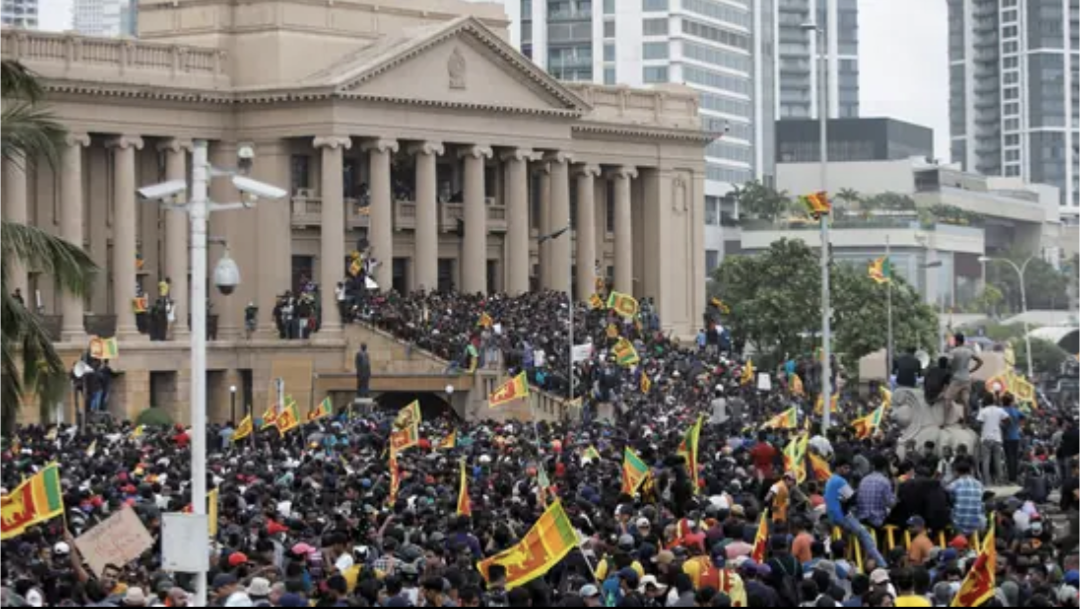Sri-Lanka - A downtrodden economy
Sri Lanka, one of India’s neighbours in the south has been making the headlines for a while now. The island nation has gotten itself into the worst economic crisis the country has seen in several decades. Power cuts, shortage of medicines and essentials have accumulated to create a deficit of basic necessities to its people. Sri Lanka is severely under debt with its foreign reserves completely exhausted
How did Sri Lanka get here?
The Rajapaksa government faces stiff disappointment from the citizens of Sri Lanka over the mismanagement of the country’s economy, which has thrown millions of people into the precarious pit of unemployment. The only self sufficient island nation is now finding it extremely difficult to even buy basic essentials and commodities. Inflation currently stands at 25%. There are daily powercuts in the country ranging up to 5 hours a day, which is set to aggravate further. Food prices have seen an inflation of 14%. A few reports also suggest that people have o walk miles in order to procure petrol and diesel. Schools across the country have cancelled exams due to shortage of paper. The two major newspapers running in Sri Lanka have been shut down due to the same.
Troubles started mounting for the Sri Lankan economy even before the onset of the Covid-19 pandemic. The lockdowns accelerated Sri Lanka’s mounted woes of its crumbling economy, impacting the informal sector really hard which accounts for nearly 60% of the country’s workforce. The country's foreign exchange reserves have fallen 70 percent to about $2.31 billion leaving it struggling to pay for essential imports, including food and fuel. A shortfall in foreign currency, leaving traders unable to finance imports has also contributed to the crisis. The Covid-19 pandemic aggravated Sri Lanka’s growing concerns of a crumbling economy as it brought a drastic blow to the once flourishing tourism industry. Remittances sent by overseas Sri Lankans also declined sharply, in contrast to the situation with India.
Critics say the roots of this crisis lie in economic mismanagement by successive governments that created and sustained a twin deficit- a budget shortfall alongside a current account deficit. (Twin deficits signal that a country’s national expenditure exceeds its national income, and that its production of tradable goods and services is inadequate). The current crisis was accelerated by deep tax cuts promised by Rajapaksa during a 2019 election campaign. The Rajapaksa government’s decision to ban all chemical fertilisers in 2021, a move that was later reversed, also plummeted the country’s farm sector and triggered a drop in the critical rice drop.
As of February 2022, the country is faced with debt repayments of around $4 billion including a $1 billion international sovereign bond (ISB) maturing in July. ISBs make up the largest share of Sri Lanka’s foreign debt at $12.55 billion, with the Asian Development Bank, Japan and China among the other major lenders. In a review of the country’s economy released last month, the IMF said that public debt had risen to “unsustainable levels” and foreign exchange reserves were insufficient for near-term debt payments.
What has India done?
India, as part of the “Neighbourhood First” policy, has assured assistance to the Sri Lankan government in this dire situation. Rajapaksa has sought help from China and India, particularly assistance on fuel from the latter. A diesel shipment under a $500 million credit line signed with India in February is expected to arrive on Saturday. Sri Lanka and India have signed a $1 billion credit line for importing essentials, including food and medicine, and the Rajapaksa government has sought at least another $1 billion from New Delhi. EAM Dr. Jaishankar has signed an MoU to help the country set up 3 power projects which previously belonged to China. Further, EAM Dr. S Jaishankar has personally stepped in to address the issues of on of Sri Lanka’s renowned hospitals to meet their requirements.
In the month of January, the RBI announced a $400 million swap to help Sri Lanka shore up reserves, as part of an aid package. The neighbours then signed an agreement for a $500 million credit line to purchase oil from India. The agreement proved critical as global oil prices soared after the Russian invasion and Sri Lanka’s fuel imports jumped as much as 40% in a week. In the same month, Sri Lanka and India signed a $1 billion credit line for importing essentials, such as food and medicine. Further, the country has sought an additional credit line of a billion dollars from India to help bring in essentials as shortages persist. India has also extended a $400 million currency swap and deferred payment of $515.2 million to the Asian Clearing Union (ACU) by two months.
India so far has engaged only through bilateral relations and committed to its foreign policies. As the situation in the crisis deepens, India emerges as a victor in terms of its promise to the ‘neighbourhood first policy’.
